Speed training drills are critical for any athlete. Your ability to move quickly throughout the field, pitch or court is what allows you to score more points, run more touchdowns, steal more bases, or snag more layups.
With a lot of baseball guys headed back into off-season training, it’s time to bring back the basics and work on building foundational speed from the ground up. Unless you’re new to OTA, you’ll know how much I stress the term “isolate and elevate,” in order for athletes to see results.
Oftentimes the strength and conditioning world tends to focus on the “newest” and most progressive strength drills, but forget the small things that make a difference.
In my eyes, you can’t improve at something you haven’t mastered the basics of yet. That’s why today I’m going over a progression to enhance your linear speed, using a series of bounding drills.
Before starting, assess yourself as an athlete based on your sport and skill level. This will give you better insight to adapt this series into your current training. This could be anywhere from just once a month to as often as once a week.
Training for Top Speed
Let’s start by breaking down linear speed:
Sprinting begins with acceleration as you try to build up towards linear speed. This is the point at which you’ll hit top speed, typically on a straight away.
Speed is a combination of stride length x stride frequency.
Recently I shared a video going into more detail about the importance of smooth stride frequency or turnover. This develops a more efficient stride with a cyclical follow-through action in the legs (think of good backside mechanics)
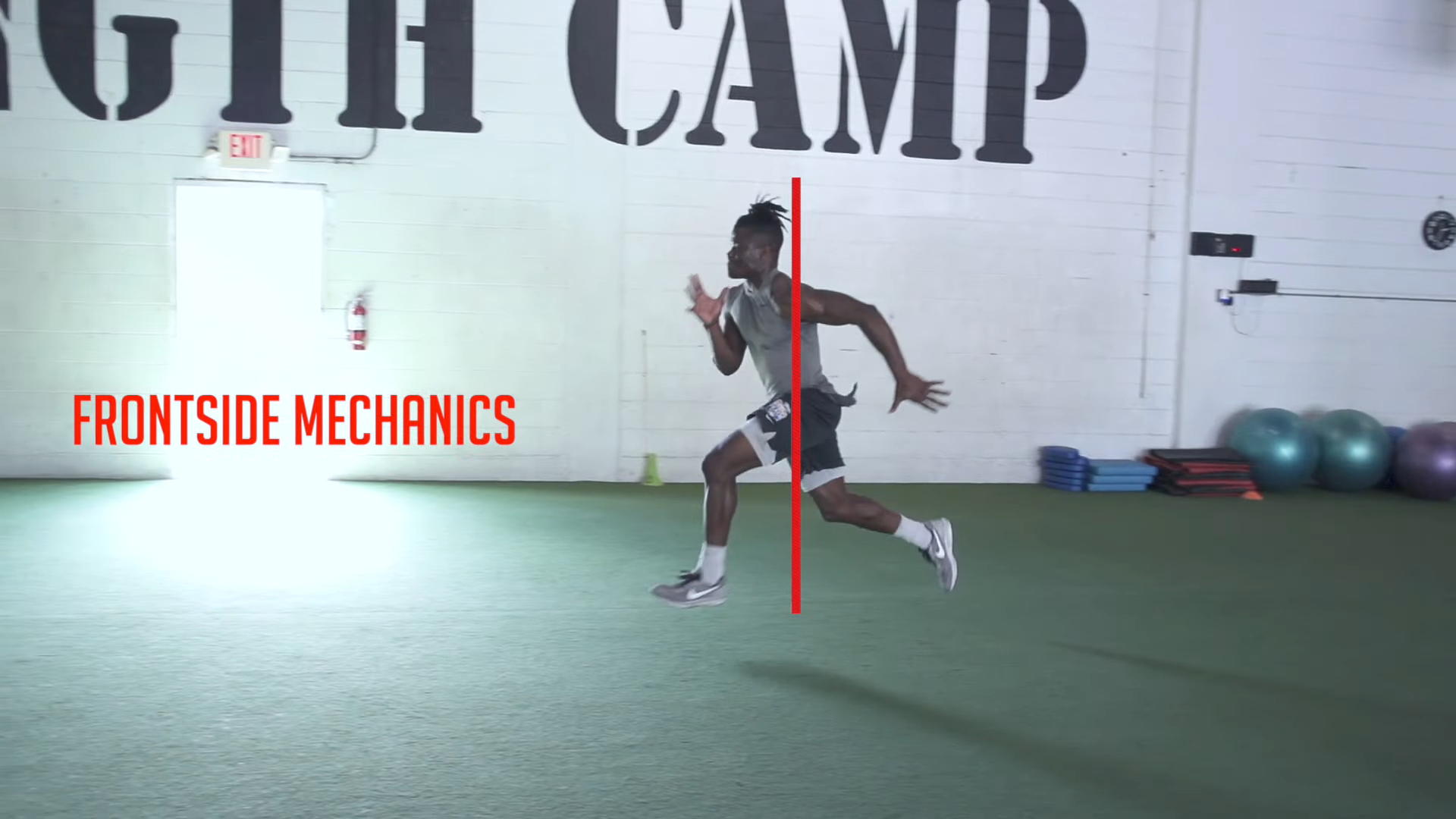
The series I’m about to share with you focuses on stride length.
A lot of guys tend to attempt unnaturally lengthening their stride and overreaching. Instead, focus on these two things:
- Front-side mechanics
- Applying greater force with each stride
Each drill increases in complexity so I recommend completing them in order and build on top of each. The first could be suitable for youth athletes, while the third and most advanced drill causes offers a greater challenge.
Whatever you do, creating a stress on the body will overtime create an adaptation and ultimately push you to get faster.
Speed Training Drills: Bounding Series
*With each drill pay attention to the angle of the thigh to the torso.
- SL bounds
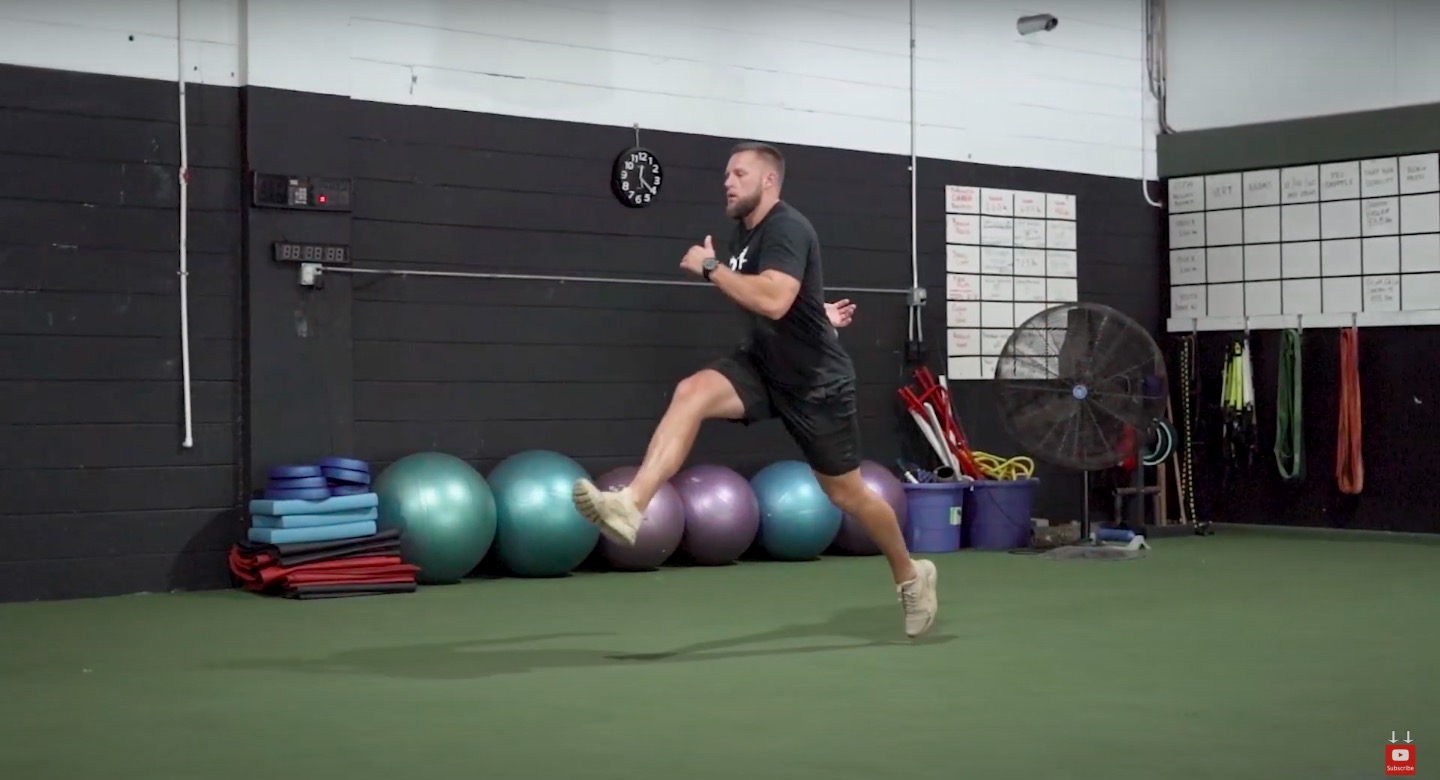
Starting with a straight leg keep the knee slightly bent, but locked in position. From here, focus on striking the foot directly below the hip.
With each step, you should think of “pulling” yourself forward, focusing on using the glute muscles.
2. Thigh Pop drill
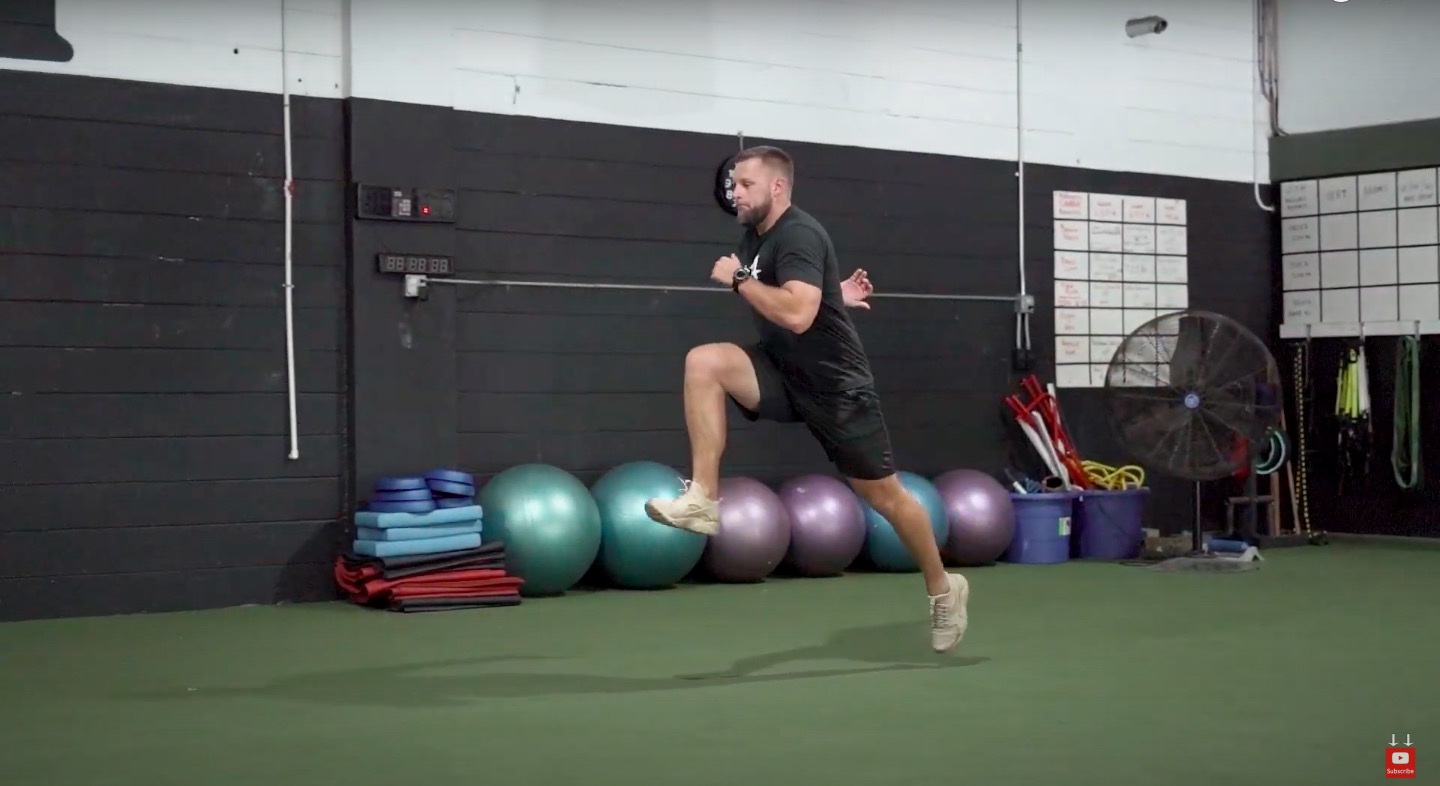
Here you’re creating the same feeling of “pulling” forward, but with more focus on the front-side mechanics. You’re looking to bring the knee up to parallel with each stride, creating a strong strike into the ground as you move forward.
This drill should activate more of the hamstrings muscles.
3. Alternating Bounds
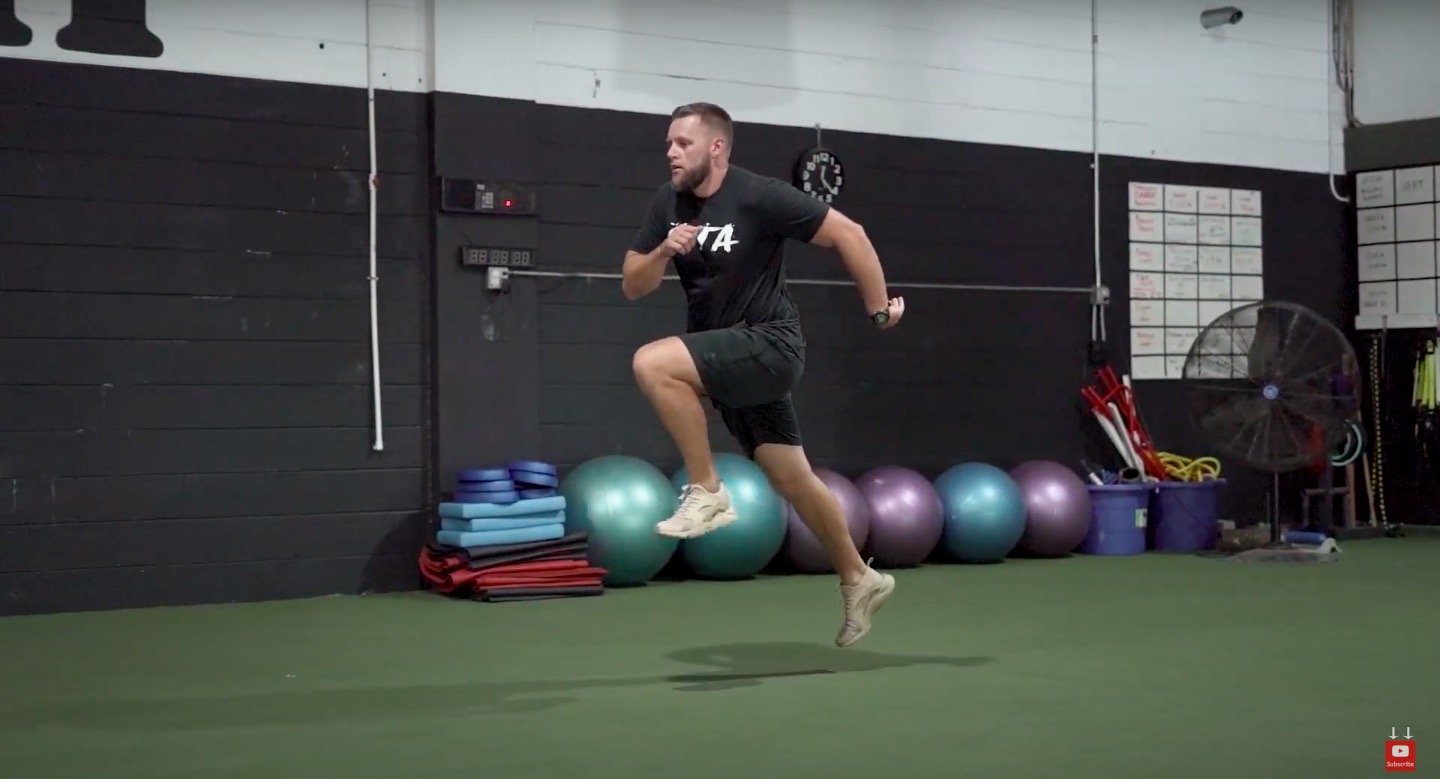
For the most complex drill, as opposed to a pull you should focus on actively striking the foot directly into the ground below your hips. This drill focuses on combining glute extension with the hamstrings.
This puts even more stress on the body, leading to greater adaptation.
Alternating bounds focus on enhancing hip extension and increasing force production through. The more force you can put into each stride, the more ground you can cover and increase your top speed.
** If you’re starting the baseball off-season soon, check this out:
BASEBALL WORKOUT FOR TOP SPEED, AGILITY, AND HYPERTROPHY
More Game Speed Training Drills
Let’s be honest… speed dominates in every sport.
If you have a quick step and can out-move anybody on the field, you’ve got a future ahead of you. That’s why adding in speed training to your gym workouts is essential to stepping up your game.
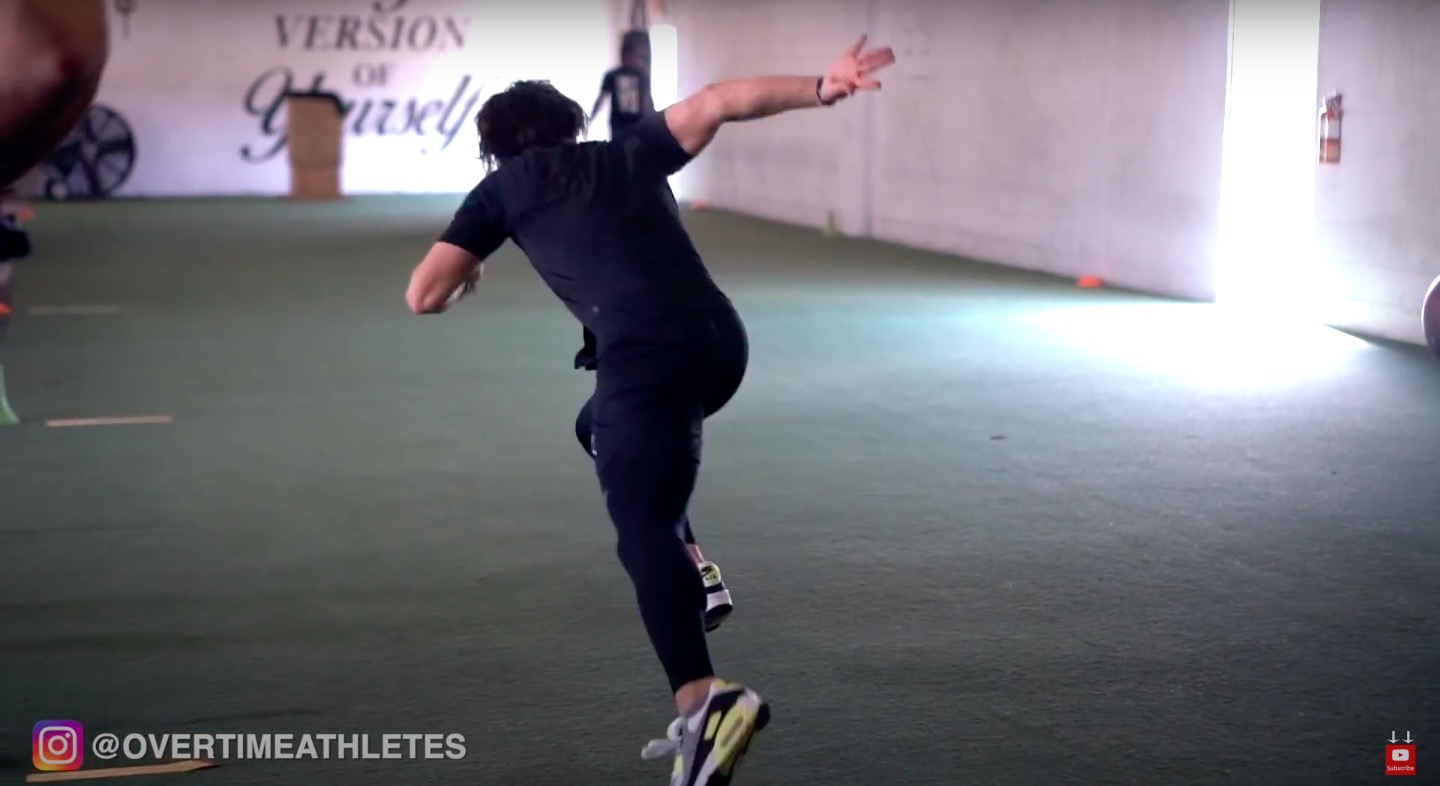
Begin adding in this series of speed training drills to your training and you should start seeing a difference in your front-side mechanics.
Keep it up and watch your top speed increase as well.
There’s a lot more that goes into developing deadly speed though… you need the 3 pillars of speed training:
- Relative Force Production
- Acceleration Mechanics
- Max Velocity Mechanics
Consider this your recipe for success this season, no matter what sport you play.
If this sounds like something you want for your upcoming season, be sure to check out my athlete-proven 14 week Athletic Speed System.
Join other elite athletes who have seen major changes with this system like TJ Leaf, Rayshawn Jenkins, and Bo Bichette.
